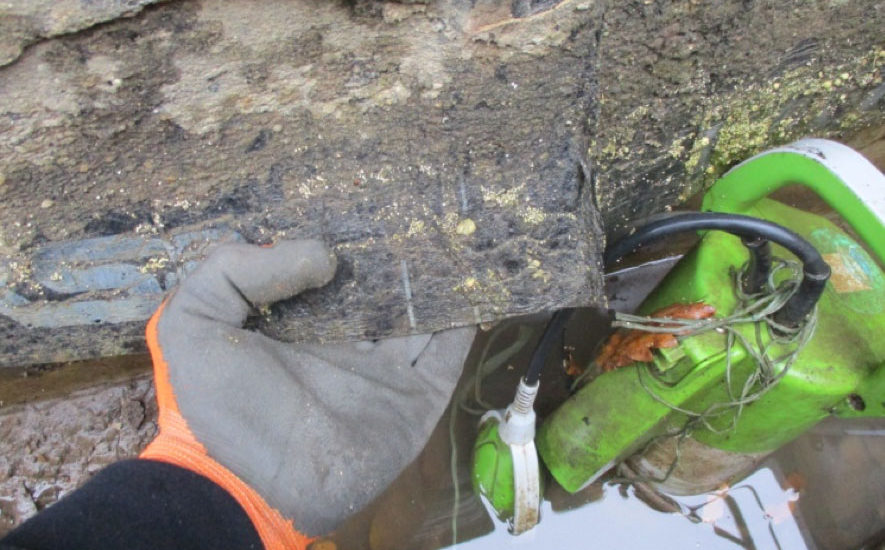Detachment of concrete
Detaching of concrete

Burned roofing and other materials have to make sure the ground level zone is waterproof. In practice these often detach from the surface, especially after a (strong) winter. The consequence of this is rain water runs laterally inside by a saturated ground level zone.
While pouring concrete a cement skin will form on the surface of approximately 0,5mm thickness. Concrete can be perfectly waterproof, the cement skin is however very porous. Also often releasing oils are used which influence the detachment even more.
Rainwater then runs through the cement skin, which gets wet. With every frost period this wet cement skin will swell 10% because of the freezing of the water in the cement skin. After the thaw melting water again runs into the cement skin and freezes again with the next frost period and will swell again 10% in width.
In this way the sealing layers detach form the concrete surface, usually after 1 winter.
If however the cement skin is taken away, before the sealing layer is applied, the detachment will be a lot less or not at all and thus the damage can be prevented.
Because of the thicker floor construction in newer buildings and the level of the pavement which is usually placed on par with the floor level inside the building, a guarantied waterproof ground level zone is crucial.


